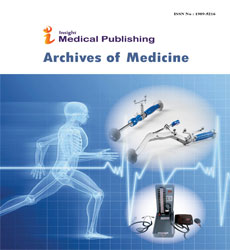Abstract
Non-Invasive Hemodynamic Monitoring in TAVI-Patients Reveals More Pronounced Early in-Hospital Circulatory Recovery for Low-Gradient Aortic Stenosis
Background: Little is known about differences and changes in hemodynamic in patients with Low-gradient (LG) and Non-Low-Gradient (NLG-) Aortic valve Stenosis (AS). Our current observation reveals such specific changes using the non-invasive NICaS® electrical bio-impedance monitoring system.
Aim: Primary goal was to illustrate possible differences in subgroups of LG-AS and NLG-AS patients and to discriminate post-procedural adaptive mechanisms for the two subgroups.
Methods and findings: In 99 unselected patients subjected to TAVI, NICaS® measurements were performed at baseline, 6 to 8 hours after TAVI and before discharge. 46 patients had a mean pressure gradient <40 mmHg corresponding to a LG-AS. Primary endpoint was defined as the change in cardiac index between the LG-AS and NLG-AS group at discharge. Cardiac index increased in both groups as compared with baseline [from 2.52 ± 0.75 to 3.45 ± 1.15 L/min/m2 (P=0.00014) in LG-AS and form 2.70 ± 0.97 to 3.08 ± 0.94 L/min/m2 (P=0.0198) in NLG-AS]. Increase in cardiac index was more pronounced in LG-AS with a difference between the groups of 0.52 ± 0.32 L/min/m2 (P=0.041) at discharge. Additionally, LG-AS patients showed higher increase in stroke volume index, cardiac power index, and Granov-Goor index and decrease of total peripheral resistance and total peripheral resistance index as secondary parameters. One limitation of our study is the observational design in a small cohort of patients. Therefore, larger trials are warranted to confirm our findings and to show whether there is prognostic relevance for long term outcomes of the different subgroups.
Conclusion: NICaS® monitoring represents an accurate non-invasive bedsidetool to discriminate adaptive circulatory changes in subgroups of aortic stenosis patients subjected to TAVI. Hemodynamic parameters recovered more effectively in LG-AS patients after procedure. Whether a measurement-guided approach might be used for tailored peri-procedural management and could have long-term prognostic influence for AS subgroups remains to be elucidated.
Author(s): Birgit Markus*, Holger Ahrens, Corinna Heinicke, Daniela Pethig, Mareike Schnurbus, Giorgos Chatzis, Bernhard Schieffer and Dimitar Divchev
Abstract | Full-Text | PDF
Share this

Archives of Medicine peer review process verified at publons
Abstracted/Indexed in
- Google Scholar
- Genamics JournalSeek
- China National Knowledge Infrastructure (CNKI)
- Directory of Research Journal Indexing (DRJI)
- WorldCat
- Proquest Summons
- Publons
- Geneva Foundation for Medical Education and Research
- Secret Search Engine Labs
- Euro Pub
Open Access Journals
- Aquaculture & Veterinary Science
- Chemistry & Chemical Sciences
- Clinical Sciences
- Engineering
- General Science
- Genetics & Molecular Biology
- Health Care & Nursing
- Immunology & Microbiology
- Materials Science
- Mathematics & Physics
- Medical Sciences
- Neurology & Psychiatry
- Oncology & Cancer Science
- Pharmaceutical Sciences


